
The IJA armored car. Aikoku is the Chinese letters painted on the car. The proper name of this car is unknown. It is based on the Chiyoda 6-wheeled Type Q truck and it was called as Chiyoda QSW by the manufacturer. It was used by the Hyakutake unit in the Operation Nekka.
Dimensions: 5 x 1.9 x 2.6 (h) mt
Weight: 5.6 tons
Armament: 3x Type 11 6.5mm MG
Propulsion: Gasoline Engine, 75hp
Speed (Max): 60 km/hr
Armor (Max): N/A
Crew: 2
Repair vehicle Type 95 Ri-Ki


This vehicle had both tracks and wheels and it had a mechanism to move the wheels up and down, so it could change the mode between railway and track quickly (one minute to track mode and 3 minutes to railway mode). The width of the wheels could be changed in the narrow, standard and broad gauge. Ri-Ki was used in order to guard railways in Manchuria by railway engineers and some were also used in Burma. Ri-Ki is the engineer vehicle for field works. It had a 3-ton 4.5m-boomed crane.
Dimensions: 5.62 x 2.00 x 2.28(h) m
Weight : 7.8 tons
Armament: N/A
Propulsion: Gasoline Engine, 60 hp
Speed (Max): 32 km/hr
Armor (Max): 8mm
Crew: 3
Medium tank Type 97 Shinhoto Chi-Ha


After the idea of a heavy tank was dropped in the thirties, Japan started the development of a medium tank. The Chi-Ha, initially considered too costly, was preferred after that the outbreak of the war against China had put aside budgetary considerations. Well-adapted for a war against China, it proved to be quite inadequate against the Western or Russian tanks developed during the war. It remained the Japanese standard tank during the whole war. In order to improve the anti-tank capability of Chi-Ha, a new turret mounting a high-velocity 47mm gun was loaded on Chi-Ha. Shinhoto means 'New Turret' in Japanese. Its first service in action was at Corregidor Island of the Philippines in 1942. The defeat against the Russians at Kalkin Gol had shown the necessity for better medium tanks than the original Chi-Ha. Though it has been ready for several months, it only entered service in the spring of 1942, at a time when it was already outdated. The new turret was moved to the right of the vehicle and was equipped with a longer gun. That differentiate easily the Shinhoto from the original model which shared the same hull.
Dimensions: 5.5 x 2.34 x 2.38 (h) mt
Weight: 16 tons
Armament: 1x 47mm Type 1 Gun
Propulsion: Diesel Mitsubishi Type 97, 170 hp
Armor (Max): 25 mm
Speed (Max): 38 km/hr
Crew: 5
Tank destroyer Type 1 Ho-Ni III

A 7.5 cm L/38 gun, planned for the medium tank Chi-Nu and mounted in a closed combat compartment on the hull of a medium tank Type 97 Chi-Ha. The first Japanese assault guns entered in service in 1943, probably influenced by their Italian and German allies. They proved useful during the defensive battles in the Pacific during the last years of the war in Burma and in the Philippines. Ho-Ni III had a closed fighting compartment, while other Ho-Nis were open-topped.
Dimensions: 5.6 x 2.36 x 2.39 (h) mt
Weight: 15.8 tons
Armament: 1x 75mm L/38 gun
Propulsion: Diesel Mitsubishi, 170 hp
Armor (Max): 50 mm
Speed (Max): 38 km/hr
Crew: 5
Gas scattering Vehicle Type 94

The primary role of the Type 94 was to carry supplies in the battlefield area but it was often used in the reconnaissance role for which it was totally unsuited as its armor could be penetrated by ordinary rifle bullets. In 1936, each Japanese Infantry Division had a Tankette Company that had 6 Type 94s, for use in reconnaissance role. It was often used to tow a tracked ammunition trailer in a fashion similar to the British and French tankettes of this period. The Type 97 replaced the Type 92 in service. There was also a chemical/biological trailer constructed for this tank. Model 94 Tankette had a codename, "TK", which means "Tokushu (Special) Ken-in sha (Tractor)". The TK's true purpose was to pull the supply/toxic gas/bleaching powder (to counteract toxins) trailer.
Dimensions: 3.09 x 1.59 x 1.62 (h) mt
Weight: 3 tons
Armament: 1x 6.5mm, MG 1x Mustard gas scatter
Propulsion: Gasoline engine, 32 hp
Speed (max.): 40 km/hr
Armor (max.): 14 mm
Crew: 2
Anti aircraft Type 98 SPAAG


The Type 98 20mm AAG "Ho-Ki" is a well-known Japanese AAG. During the process of Ho-Ki's development and improvement, the Japanese Army produced some SPAAG types experimentally. The single AAG type had the codename "Ta-Se", which means "Taikuu (Anti-Air) Sensha (Tank)". Development of Ta-Se was based on the failure of Ki-To, so Ta-Se had circumferential protected turret. A trial product of Ta-Se was completed in November 1941, but adoption was canceled again, because the hit ratio of Ta-Se's AAG was inferior. Development of twin AAG type began in 1941, and was canceled in 1943. Completion would be planned in March 1944.
Dimensions: 4.78 x 2.19 x 2.58 (h) mt
Weight: 22 tons
Armament: 2x Type 2 20mm AA guns
Propulsion: Gasoline
Speed (Max): 42 km/hr
Armor (Max): 25 mm
Crew: 5
Mortar carrier Type 4 Ha-To
The Type 4 30cm SP Mortar "Ha-To" was developed in 1944. Ha-To had a Type 3 300mm Mortar Its chassis was converted from the prime mover "Chi-So" or "Chi-Ke". Its weight of projectile was 170kg and the effective range was 3000m. Ha-To was regarded as an effective vehicle, but it was not mass produced due to the progress of rocket artillery.
Weight: 15 tons
Dimensions: 6.8 x 2.4 x 2.75 (h) mt
Armor (max): 8 mm
Speed (max): 4 km/hr
Engine: Diesel Engine, 165 hp
Armament: 1x Type 3 300 mm Heavy Mortar, 1x Type 97 7.7 mm MG
Crew: 7
Heavy tank Type 4 Chi-To


Chi-To's development began in 1942, to succeed Shinhoto Chi-Ha. In the first plan, the hull would be modified type of Chi-Ha, and main armament would be high velocity 57mm ATG. The plan changed in July 1943, to arm with 75mm high velocity cannon (copy of Bofors M29 75mm AAG) to catch up with world standard specification. So, it was decided that Chi-To would be designed all over again - from the ground up. The first prototype was finished in May 1944. Owing to war material priorities and other factors, only 6 were ever completed. The Type 4 Chi-To was one of the best Japanese tanks with good armor and good fire-power, but it was introduced too late. Its gun was converted from Type 4 75mm AA Gun and can penetrate the front armor of M4 Sherman from 1,000m distance. This design never went beyond prototype before the war ended.
Dimensions: 6.34 x 2.86 x 2.86 (h) mt
Weight: 24 tons
Armament: 1x 75mm 75 mm Type 4 gun, 1x 7.7 mm MG
Propulsion: Diesel Mitsubishi Type 4, 400 hp
Speed (Max): 45 km/hr
Armor (Max): 75 mm
Crew: 5
Super heavy tank O-I

Heavy armored and heavy armed tank. It is said that one prototype was being manufactured when WWII ended. However, according to an engineer concerned with it, it had been completed and was disassembled for dispatching to Manchuria. No photo nor drawing of O-I is known. The O-I had three-turrets and weighed 120 tons. Its dimensions were 10 meters by 4.2 meters by 4 meters high. The armor was 200mm (MAX). The tank had a top speed of 25km/hr. This version a two gasoline engines developing 550 PS/1500 rpm. The O-I had 1 x 105mm Cannon, 1 x Type 1 37mm (in a forward mounted sub turret), and 3 x Type 97 7.7mm (one mounted in a forward sub turret) where as the Experimental version also mounted a Type 1 37mm in a rear facing sub turret.
Dimensions: 10 x 4.2 x 4 (h) mt
Weight: 120 tons
Armament: 1 x 105mm Cannon, 1 x Type 1 37mm (in a forward mounted sub turret), 3 x Type 97 7.7mm (one mounted in a forward sub turret), 1x Type 1 37mm in a rear facing sub turret
Propulsion: 2x Gasoline engines, 550 hp each
Speed (max): 25 km/hr
Armor (max): 200mm
Crew: 11
Armored Engineer Vehicle Soukou Sagyou Ki "SS-Ki"

SS had following nine functions; (1)destruction of pillbox, (2) digging trench, (3)mine sweep, (4)destruction of wire entanglements, (5)disinfection, (6)scattering poison, (7)flamethrow, (8)crane, (9)smoke discharge, and a bridgelaying function was added later. On the upper photo, two stick-like projections in front of the vehicle and in the side of vehicle are flamethrowers. The wheels on the top of the hull are the device for loading a bridge.At first, SS was developed in order to destroy the Soviet pillbox in the border of Manchuria. However, during its development, many functions were added by the request of users. SS could achieved many functions by replacing the devices. Though SS had a lot of functions, most of them were insufficent and the really useful one was a bridgelayer only. First four SS were deployed in the 1st Independant Mixed Brigade and they executed the flamethrow in the battle near Peking on July 28th, 1937. It was the first time that SS saw the action. After that, SS was deployed in the special engineer regiment for SS, which was established for the service of the destruction of the Soviet pillbox. When the tank divisions were established, the engineer regiment for SS was taken over to the tank divisions. In tank divisions, SS was mainly used as a bridgelayer. When the 2nd Tank Division went to the Philippines in the last WWII, some SS were also sent there. The action of SS in the Philippines is not known, but eight SS were captured by Americans.
Dimensions: 4.865 x 2.52 x 2.088 (h) mt
Weight: 13 tons
Armament: 3x Flamethrowers, 1x Machine Gun
Propulsion: Diesel Engine, 145 hp
Speed (max): 37 km/hr
Armor (max): 25 mm
Crew: 5
Fighter Mitsubishi A6M8 Zero-Sen

The Mitsubishi A6M Zero Fighter was the finest shipboard fighter in the world during the first year of the Pacific War. It was the first shipboard fighter capable of defeating its land-based opponents. Its world-wide fame was won in a series of astounding victories against all types of land-based and carrier-based Allied aircraft during the first six months after Pearl Harbor. It took part in every major action in which the Japanese Navy was involved, from Pearl Harbor all the way to the final B-29 assault on Japan. It became a legend in its own time for its extremely good maneuverability and its exceptionally long range. Even today, the Zero remains for the Japanese and their erstwhile enemies alike the symbol of Japanese air power during the Pacific War. Despite the fact that it was largely obsolescent by mid-1943, it remained in production until the end of the war. More Zeros were built than any other type of Japanese aircraft, a total of 10,449 being built at Mitsubishi and Nakajima factories. The A6M8 was the last production version of the Reisen. Bomb damage to the Nakajima engine plants (as well as Nakajima's decision to decrease Sakae production in preparation for the production of the 18-cylinder Homare radial) had resulted in a shortage of the Sakae radial engines which had previously powered the Zero Fighter. Consequently, the Navy finally accepted Mitsubishi's proposal to use their more powerful MK8K Kinsei 62 (Ha-33/62) fourteen-cylinder air-cooled radial engine.
Manufacture of the Kinsei-powered A6M8 prototypes was finally approved in November 1944. The forward fuselage was completely redesigned to accommodate the 1560 hp Mitsubishi MK8P Kinsei 62, which had a larger diameter than the Sakae, requiring that the fuselage-mounted gun be removed. At the same time, the fuel tank fire-extinguishing system was improved, and additional fuel tankage was added. The fuselage centerline could carry a single 1100-lb bomb, and a pair of 77-Imp gall drop tanks could be carried underneath the wings.
Wing span: 10.81 mt
Lenght: 9.1 mt
Height: 3 mt
Weight (max): 3125.25 kg
Propulsion: 1x Mitsubishi MK8P Kinsei 62, 1560 hp
Speed (max): 596.6 km/h
Service ceiling: 11123 mt
Armament: 2x 13.2-mm Type 3 MG, 2x 20-mm Type 99 cannon in the wings.
Bomb load: 495 kg + additional 59.4 kg
Crew: 1
Interceptor Kyushu J7W Shinden
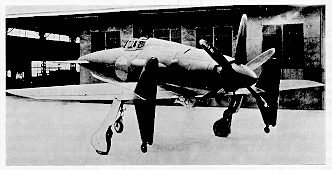
The "Shinden", if it had go further than the prototype status, would have been not only a formidable opponent to the allied air superiority, but also one of the most original plane of its time. It was one of the rare aircraft to adopt the canard configuation (with the rudder near the cockpit instead of near the tail) and a six-bladed push propeller behind the plane.
The program started in Yokosuka under the direction of Masaoki Tsuruno. The concept was first successfully tested on experimental gliders (the MXY6). The concept and the conceptors were transferred to Kyushu (the new name of Watanabe) to pursue the development works. The main qualification of the Kyushu for that task, was that it was less overworked than its competitors in the Japanese aircraft industries. The J7W1 was intended to be an interceptor fighter. First, the canard concept was tested with three MXY6 gliders, then a designing team with
captain Masaoki Tsuruno (Imperial Japanese Navy) developed the J7W1.
Two prototypes were built, the first had its first flight on august, 3rd 1945. The second was never tested. It was an all-metal construction with a full retractable landing gear and a six-blade-propeller. Quantity production was undertaken, but no production aircraft had been completed due to end of the war. The J7W2 version was planned to get a 900kp Ne-130 axial turbojet instead of the radial powerplant.
Wing span: 11.11 mt
Lenght: 9.66 mt
Height: 3.92 mt
Weight (max): 5228 kg
Propulsion: 1xMitsubishi MK9D [Ha-43], 2130 hp
Speed (max): 750 km/h
Service ceiling: 12000 mt
Armament: 4x 30mm Type 5 cannons
Bomb load: 2x 60 kg or 4x 30 kg bombs
Crew: 1
Air transport Nakajima Ki-34/L1N1 "Thora"

Originally designed as a civil transport, the Nakajima AT-2 was adopted by the Imperial Japanese Army in 1937 as the Ki-34. Later a number of these Army machines were transferred to the Imperial Navy and redesignated L1N1.
Wing span: 19.81 mt
Lenght: 15.3 mt
Height: 4.15 mt
Weight (Max): 5250 kg
Propulsion: 2x Nakajima Kotobuki-41, 71' hp each
Speed (Max): 360 km/h
Service ceiling: 7000 mt
Armament: N/A
Bomb load: N/A
Crew: 3
Bomber Nakajima G8N1 Renzan

Renzan was a four engine heavy bomber that was being developed by Nakajima for the Imperial Navy. Four prototypes were built, and four production models were in the works when the Navy decided to cancel production in June 1945 because there was no need for such a bomber at that date. Although some have said that the Renzan was the Japanese equivalent to the B-29, it was probably closer to the B-17 after which it was roughly modeled.
Wing span: 32.54 mt
Lenght: 22.94 mt
Height: 7.2 mt
Weight (Max): 32150 kg
Propulsion: 4x Nakajima NK9K-L "Homare-24", 2000 hp each
Speed (Max): 593 km/h
Service ceiling: 10200 mt
Armament: 6x 20mm cannons, 4x 12.7mm MG
Bomb load: 4000 kg
Crew: 10
Turbojet fighter/interceptor Nakajima Ki-201 Karyuu
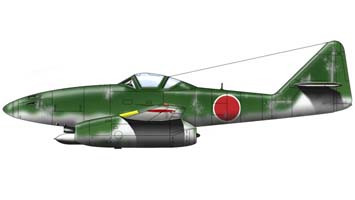
The data for the Me262 jet intercepter were brought to Japan from Germany by 1944.
The fighter "Ki-201 Karyuu" was developed with Nakashima based on this data.
This project was the joint development of the imperial army and navy.
"Karyuu" expanded Me262. However, development progressed slowly.
Pacific war was ended at the moment when a production drawing was completed.
Wing span: 13.70 mt
Lenght: 11.50 mt
Height: 4.05 mt
Weight (max): 7000 kg
Propulsion: 2x Ishikawajima Ne-130 Turbojet, 908 kg each
Speed (max): 852 km/h
Service ceiling: over 12000 mt
Armament: 2x 30mm Type5 cannons, 2x 20mm Type99 cannons
Bomb load: 1x 800 kg
Crew: 1
Super heavy bomber Nakajima G10N1 Fugaku

In April of 1943, Nakajima undertook the study and design of just such a bomber and they did so on their own volition, not at the request of either the Navy or the Army air arms, although ultimately, the Navy would hold sway over the project. Entitled Project Z, Nakajima looked at the requirements for an aircraft able to attack the United States and it should not be a surprise that they looked to the Boeing B-29 as a basis to begin, given that it had the range and ability, which the Japanese could plainly see as those very planes bombed their cities. The work attracted the attention of the military and the data and concepts worked up by Nakajima formed the basis of an official inquiry jointly conducted by the Navy and Army. Initially, Nakajima wanted to use the powerful Nakajima Ha-505 thirty-six cylinder radial, mounting three per wing. Each would develop 5,000hp. But it was to be seen that the Ha-505 would not be available in any reliable form and the project could not wait for them to be ready and so six Nakajima NK11A radials would have to be used instead, each developing only 2,500hp. This settled on, the aircraft, now designated as the G10N1 Fugaku ( Mount Fuji ), began to emerge and take shape.
The G10N1 was a pretty impressive aircraft with capability close to and in many cases, exceeding the B-29. But the Japanese could ill-afford, like the Germans, to spend critical war assets on building such large aircraft when the usefulness of them was highly dubious by the time they would have appeared on the tarmac.
Unlike some of the other large bomber designs the Japanese were working on ( such as the Kawasaki Ki-91 and the Nakajima G8N Renzan ) which actually made it to the flightline or were in the process of tooling up for construction, the G10N1 did not have any metal cut on it, remaining forever in the advanced design stage as the war came to a close for Japan.
Wing span: 63 mt
Lenght: 40 mt
Height: 8.80 mt
Weight (max): 160000 kg
Propulsion: 6x Nakajima NK11A, 2500 hp each
Speed (max): 680 km/h
Service ceiling: over 10000 mt
Armament: 7x 20mm cannons
Bomb load: 20000 kg
Crew: 11
Destroyer Matsu class
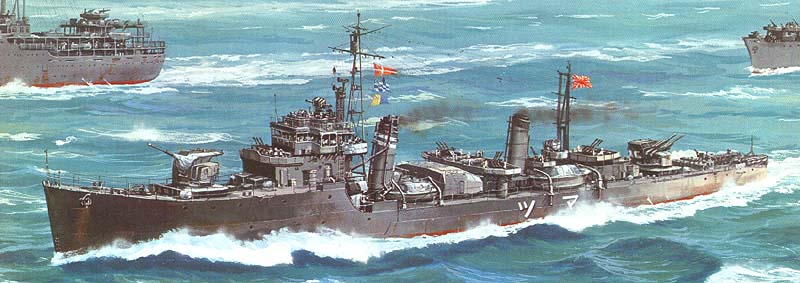
The Matsu Class, approved in the 1942 Supplementary Programme was laid down 1943-1944 and completed between April 1944 and January 1945. Designed for simplicity and rapid construction, they were analogous to the American destroyer escorts, but much more heavily armed. The 6-21inchTT in a sextuple mounting originally proposed were dropped, and a quadruple 24-inch mounting installed. The light AA armament was increased to 28 or 29 x 25 mm by 1945. The two sets of machinery were arranged in separate units to prevent a single hit immobilizing the ship.
Displacement (Max): 1506 tons
Dimensions: 92.15 x 9.35 x 3.3 (lenght x beam x draft) mt
Propulsion: 2x shaft geared Kanpon turbines, 2x boilers, 19000shp shp
Speed (Max): 27.75 knots
Main Armament: 3 x 127/50mm cal (Model 1914) (1x2, 1x1)
Secondary Armament: 4x 610mm torpedo tubes 4x depth charge throwers
AA: 24 x 25mm/60 cal cannons
Crew: 150
Submarine Sen Toku (I-400) class
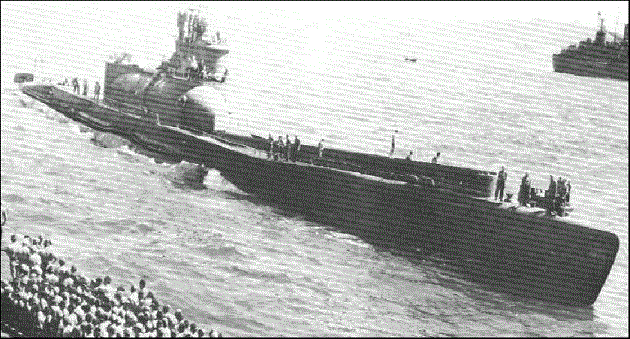
While Japan built many submarines that were larger than those of other Navies, the three Sen Toku boats were far larger than anything ever seen before. The most unusual feature was that they each carried three floatplane bombers (and parts for a fourth), a feat never achieved by any other class of submarine. These aircraft folded to fit into the 34.5 mt cylindrical hangar, which was slightly offset to starboard and opened forward to access the catapult. The huge double hull was formed of parallel cylindrical hulls so that it had a peculiar lazy-eight cross section, and may have inspired the Soviet Typhoon-class built some 40 years later. Although aircraft must be considered their primary armament, they also carried a formidable torpedo battery and the usual 14cm deck gun. Anti-aircraft armament included ten 25mm cannons in three triple mounts and one single. Each of these boats had radar and a snorkel. The aircraft were the Aichi M6A1 Seiran, also carried by the Type AM submarines. Each of these monoplanes could carry one aerial torpedo or a bomb weighing up to 800kg. Powered by the 1400hp Atsuta 32 engine (similar to Germany's DB601) they had a top speed of 295mph and were credited with a range of 642 nautical miles. The Sen Toku submarines carried four aerial torpedoes, three 800kg bombs, and twelve 250kg bombs to arm these aircraft. These aircraft had their assembly points coated with fluorescent paint to ease assembly in the dark, so four trained men could prepare an aircraft for launch in seven minutes. All three aircraft could be prepared, armed, and launched in 45 minutes. Unfortunately for Japan, the war situation deteriorated so rapidly that these boats were never allowed to show what they could do. On 26 July 1945, I-400 and I-401 set out on a combat mission to launch their aircraft in Kamikaze attacks on the American fleet anchorage at Ulithi. In coordination with a Kaiten attack, they were scheduled to launch early on 17 August, but by then hostilities had ceased. Both boats therefore returned to Japan and were surrendered to the Allies.
Displacement (max): 6560 tons
Dimensions: 120.9 x 11.79 x 6.9 (lenght x beam x draft) mt
Propulsion: 4x diesel engines, 7700 shp; 2x electric motors, 2400 hp
Speed: 18.75 (surfaced), 6.5 (submerged) knots
Main Armament: 1x 140/50mm cannon
Secondary Armament: 8x 533.4mm (8 bow), 3x Aichi M6A1 Seiran aircrafts with 800 kg of bombs each
AA: 10x 25mm cannons in 3 triple mounts and 1 single
Crew: 144
Naval transport Type 4 Ka-Tsu
Ka-Tsu was the amphibious carrier of cargo or troops developed by IJN. The engine component and electric devices are watertight and it can be carried underwater by submarine.
Some Ka-Tsu's were equipped with two torpedoes on the deck. They were the special model to attack the Allied vessels at anchor in the Pacific atolls. However, the attack by Ka-Tsu was not carried out.
Displacement (max): 16 tons
Dimensions: 11 x 3.3 x 2.8 (lenght x beam x draft) mt
Propulsion: 1x Diesel Engine, 120 shp
Speed (max): 20 km/hr (ground), 8 km/hr (water)
Main Armament: 2x 13mm MG
Secondary Armament: 2x torpedoes
AA: N/A
Crew: 5 + 4 tons cargo or 40 men
Battleship Yamato class

Yamato, lead ship of a class of two 65.000-ton (over 72.800-tons at full load) battleships, was built at Kure, Japan. She and her sister, Musashi were by far the largest battleships ever built, even exceeding in size and gun caliber (though not in weight of broadside) the U.S. Navy's abortive Montana class. Their nine 460mm (18.1-inch) main battery guns, which fired 1460kg (3200 pound) armor piercing shells, were the largest battleship guns ever to go to sea, and the two ships' scale of armor protection was also unsurpassed. Commissioned in December 1941, just over a week after the start of the Pacific war, Yamato served as flagship of Combined Fleet commander Isoroku Yamamoto during the critical battles of 1942. During the following year, she spent most of her time at Truk, as part of a mobile naval force defending Japan's Centeral Pacific bases. Torpedoed by USS Skate (SS-305) in December 1943, Yamato was under repair until April 1944, during which time her anti-aircraft battery was considerably increased. She then took part in the Battle of the Philippine Sea in June and the Battle of Leyte Gulf in October. During the latter action, she was attacked several times by U.S. Navy aircraft, and fired her big guns in an engagement with U.S. escort carriers and destroyers off the island of Samar. Yamato received comparatively light damage during the Leyte Gulf battle, and was sent home in November 1944. Fitted with additional anti-aircraft machine guns, she was based in Japan during the winter of 1944-45. Attacked by U.S. Navy carrier planes in March 1945, during raids on the Japanese home islands, she was again only lightly damaged. The following month, she was assigned to take part in the suicidal "Ten-Go" Operation, a combined air and sea effort to destroy American naval forces supporting the invasion of Okinawa. On 7 April 1945, while still some 200 miles north of Okinawa, Yamato was attacked by a massive force of U.S. carrier planes and sunk. Musashi, "sister" of the 65.000-ton battleship Yamato, was built at Nagasaki, Japan. Commissioned in August 1942, she was stationed at Truk from January 1943 into 1944 as part of a heavy force covering the Central Pacific against the threat of an American offensive. When the latter materialized, with the invasion of the Marshalls and raids by aircraft carrier planes against Japanese positions further west, Musashi's base was moved to the Palaus. She was torpedoed by the submarine USS Tunny (SS-282) on 29 March 1944, necessitating repairs in Japan, during which her anti-aircraft firepower was enhanced. In June 1944, with the torpedo damage repaired, Musashi took part in the Battle of the Philippine Sea. Her next, and last, major operation was the Battle of Leyte Gulf, in which the Japanese surface navy made a final major effort to repulse the U.S. drive into the Western Pacific. On 24 October 1944, while en route to the prospective battle area off the Leyte landing beaches, Musashi and her consorts were attacked by hundreds of U.S. Navy carrier aircraft. In this Battle of the Sibuyan Sea, she was hit by some nineteen torpedoes and seventeen bombs. Though her heavy protection withstood this massive damage to a degree probably unsurpassed by any other contemporary warship, Musashi capsized and sank about four hours after she received her last hit.
Displacement (max): 72809 tons
Dimensions: 263.2 x 38.9 x 10.9 (lenght x beam x draft) mt
Propulsion: 12x Kanpon boilers, 4x Kanpon geared steam turbines, 4x shafts, 153533 shp
Speed (max): 27.46 knots
Main Armament: 9x 460mm/45 cal cannons Model 1934 in 3 triple turrets
Secondary Armament: 12 x 155mm/60 cal cannons Model 1914 in 4 triple turrets, 24 x 127mm/40 cannons cal Model 1928 in 12 twin turrets 2x Aichi E13A1 aircrafts, 2x Mitsubushi F1M2 aircrafts
AA: 146x 25mm/60 cal cannons
Armour: 200 mm (deck), 410 mm (side), 650 mm (turrets), 495.3 mm (control tower)
Crew: over 2500
Aircraft carrier Akagi class
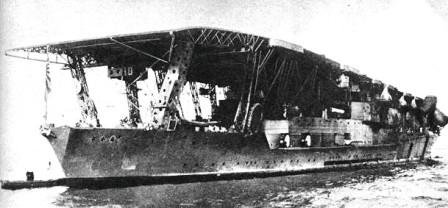
The Akagi is very similar to the Kaga. The Akagi's keel was first laid down in December, 1920 as a battlecruiser of the Amagi class. When the Japanese signed the Washington Treaty, it wa decided to convert the Akagi to an aircraft carrier. Upon completion as a carrier, she looked very similar to the Kaga, which also had three flight decks when she was comleted as a carrier. Between 1935 to 1938 the Akagi was at Sasebo Naval Base going through a refit and modernization. She was fitted with one flight deck extending the length of the ship, and as something new, her bridge was placed on the port side of the ship along with a single funnel 275 feet long on starboard side. While in the Sasebo Naval yard for modernization the horsepower was increased from 131000 to 133000, four of the 203.2mm guns were removed, and the aircraft capacity was increased from 61 to 91. Later on the long rectangular funnel was removed and a squat funnel very similar to the Kaga's was added. The flight deck inclined downward slightly, fore and aft from a point one third of the length from the bow. The battle cruiser's machinery was basically retained. Smoke discharged via a large, downward-angled funnel supplemented by a smaller, upward-pointing stack further aft. The reason for this was to assist planes getting more speed during takeoff and to help them slow down more during landings. The Akagi served as the flagship of the Carrier Fleet under Admiral Nagumo. The Akagi was sunk by American planes at he Battle of Midway.
Displacement (max): 41300 tons
Dimensions: 260.7 x 31.3 x 8.7 (lenght x beam x draft) mt
Propulsion: 19x Kampon type B Boilers, 4x Gihon Turbines, 4x shafts, 133000 shp
Speed (max): 31.2 knots
Main Armament: 6x203/50mm Type I cannons
Secondary Armament: 91x Aircrafts
AA: 12x 120/45mm cannons, 28x25/60mm cannons, 22x13,2mm cannons
Armour: 71mm (deck), 53mm (flightdeck), 254 mm (side), 163.5 mm (conning tower)
Crew: 2000
Suicide motorboat Maru Re
Maru-Re is the motorboat loading a 250kg explosive charge. It was possible to drop a charge near an enemy ship and return, but the most crews selected to crash against an enemy ship. In Jan., 1945, Maru-Re first saw action and sunk several US vessels in the Gulf of Lingayen, Philippines.
Displacement (max): 0.83 tons
Dimensions: 5.6 x 1.8 x ? (lenght x beam x draft) mt
Propulsion: Gasoline engine, 70 shp
Speed (max): 24 knots
Main Armament: 250 kg of explosive
Secondary Armament: N/A
AA: N/A
Armour: N/A
Crew: 1
Field howitzer Type 89 15cm
Type 89 was the main gun of the IJA heavy artillery units. It was widely used from the Manchurian Incident to the end of WWII, for example, Nomonhan, Bataan and Corregidor Island, Okinawa.
Caliber: 149.1mm
Barrel weight: 10422 kg
Length: 5963 meters
Weight of the projectile: 40.2 kg
Muzzle velocity: 734 meters per second
Range: 18100 meters
AA gun 120mm Type 3
Heavy antiaircraft gun developed by the Japanese Navy towards the end of the war. This AA was developed in order to protect the major cities in Japan proper from the air raid. It was deployed at cities by small numbers.
Caliber: 120 mm
Length: 6.71 meters
Weight of the projectile: 23.4 kg
Muzzle velocity: 20500 meters
Range: 20500
Ceiling: 14000 meters
AT field gun Type 1 47mm
After the Nomonhan Incident, IJA started the development of new AT, considering that Type 94 would be ineffective against Soviet new tanks. However, Type 1 was late to the openning of the Pacific War and Japanese infantries had to fight desperately against Allied M3 Light Tank.
This AT was also used as the main gun of Shinhoto Chi-Ha.
Type 1 was insuffienct against Allied Medium Tank M3 or M4, but Japan failed to develop the successor of Type 1. Type 1 was used until the end of WWII.
Caliber: 47 mm
Length: 2.5265 meters
Weight of the projectile: 1.5 kg
Muzzle velocity: 830 meters per second
Range: 6900 meters
Edited by Rygar, 08 August 2004 - 09:52 PM.




 This topic is locked
This topic is locked











